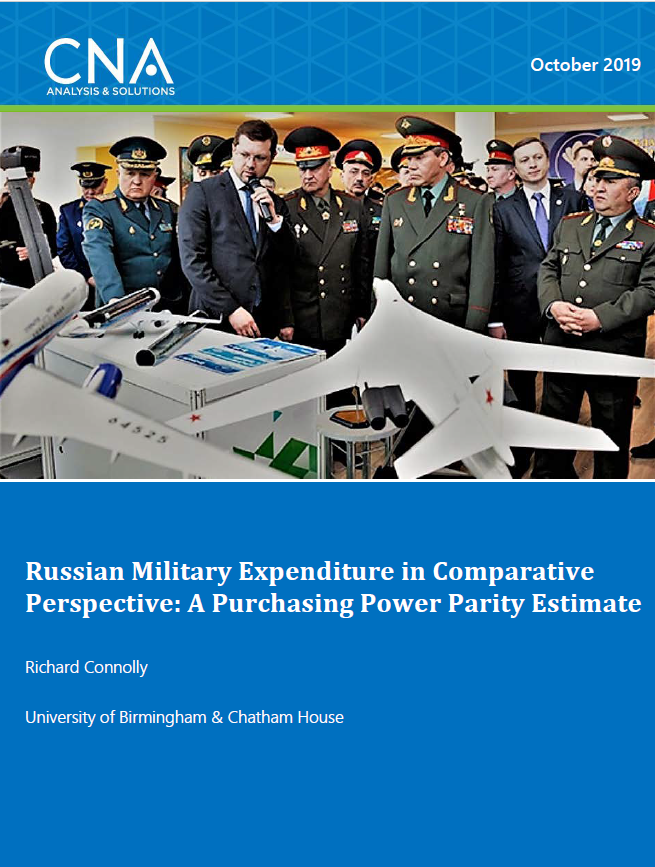It is now largely accepted that the Russian military enjoyed a significant and, from the Russian perspective, much-needed revival after 2010. Boosted by an ambitious rearmament program that began in 2011, the military received a substantial and sustained injection of funding from the federal government. These extra funds helped improve pay and conditions for those employed in the armed services and its supporting structures, and it helped replenish the armed forces with new or modernized equipment. Increased military expenditure also enabled the armed forces to increase the scale and tempo of training and exercises. As a result, this expanded spending enhanced Russia’s overall military capability, which in turn strengthened Russia’s position as a geopolitical actor and reinforced its leadership’s claims to Russia’s status of a “great power.”
However, considerable confusion remains over the relative scale of Russian military expenditure. Much of this confusion is explained by differences in what analysts choose to measure when examining military expenditure. For example, definitions over what constitutes military spending in Russia vary. Should, for example, spending on paramilitary forces be included? If so, any estimate of expenditure that includes this spending will be higher than those that do not. But confusion is also generated by how analysts choose to measure military expenditure. For example, when US dollars (USD) calculated at market exchange rates are used to measure military expenditure across countries, the data can fluctuate wildly over time— typically due to changes in relative exchange rates rather than any significant changes in military expenditure. As a result, when the ruble (RUB) depreciated sharply vis-à-vis the USD in 2014–15, Russia’s military expenditure was often presented as having declined, even though its military expenditure was in fact growing in terms of local currency. Taken together, these differences in what and how we choose to examine Russian military expenditure can result in very different assessments of Russia’s present and future military potential. This variation in turn presents problems when comparing Russian military expenditure with that of other countries. All of these issues should concern analysts seeking to understand the scale of the challenge posed by Russia’s military revival. After all, an accurate measure of the volume of financial resources allocated to military purposes is a crucial component of any country’s military potential.
This paper provides an estimate of Russian military expenditure that (a) approximates the real scale of resources allocated to military expenditure in Russia and (b) is readily comparable with military expenditure in other countries. This estimate should help focus analysts’ attention on both the scale and rate of change of Russian military expenditure, and also on whether trends in Russian military expenditure are “normal” compared to other countries. To do so, this paper is structured as follows. It presents the main methods for estimating the scale of the defense “burden” in the first section. It then outlines several estimates of Russia’s defense “effort” in the second section, including measures that are based on a purchasing power parity (PPP) calculation of military expenditure.
Download reportDISTRIBUTION STATEMENT A. Approved for public release: distribution unlimited.
Details
- Pages: 30
- Document Number: IOP-2019-U-021955-Final
- Publication Date: 10/1/2019
